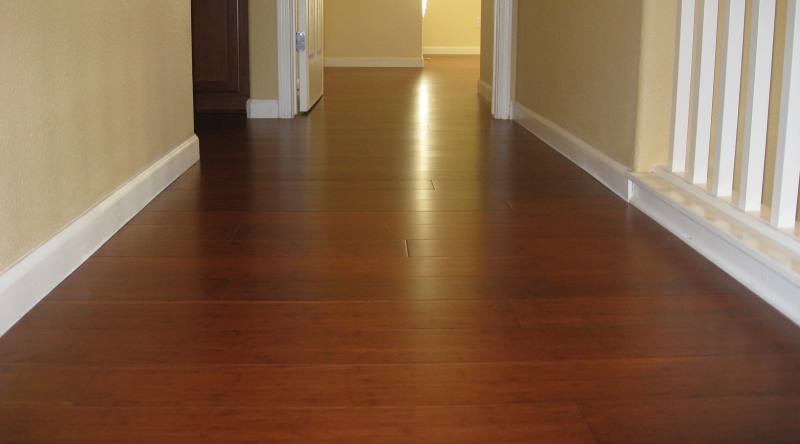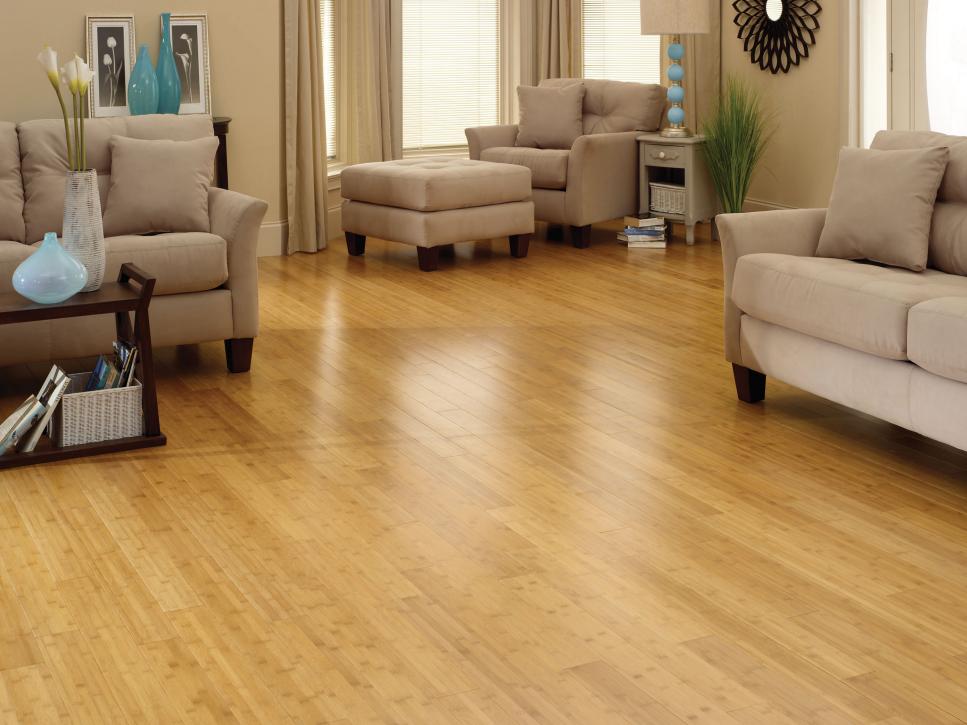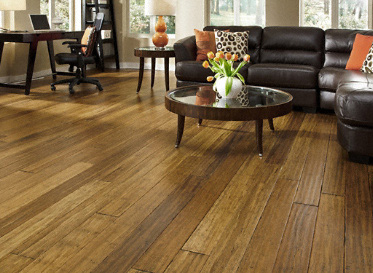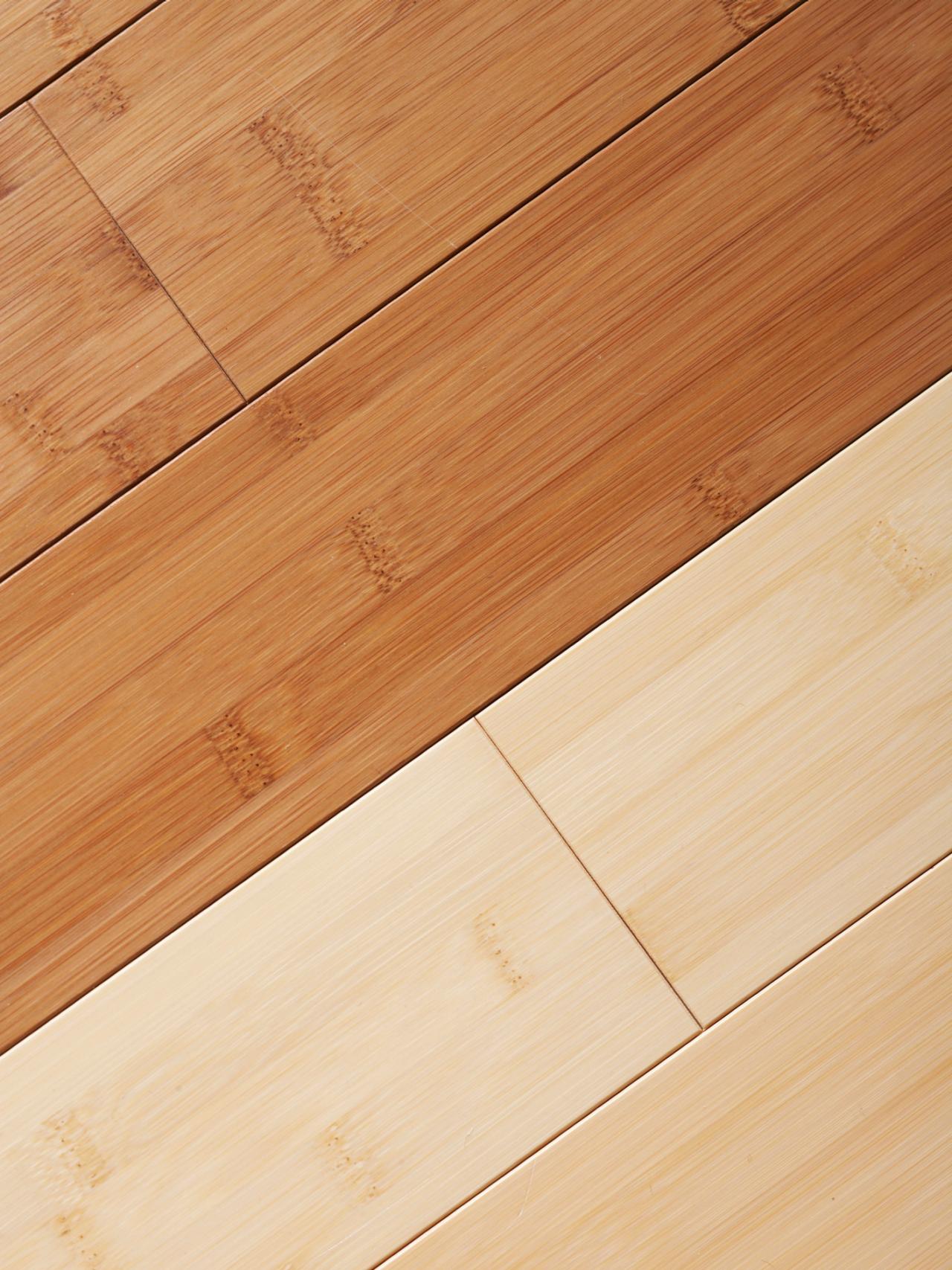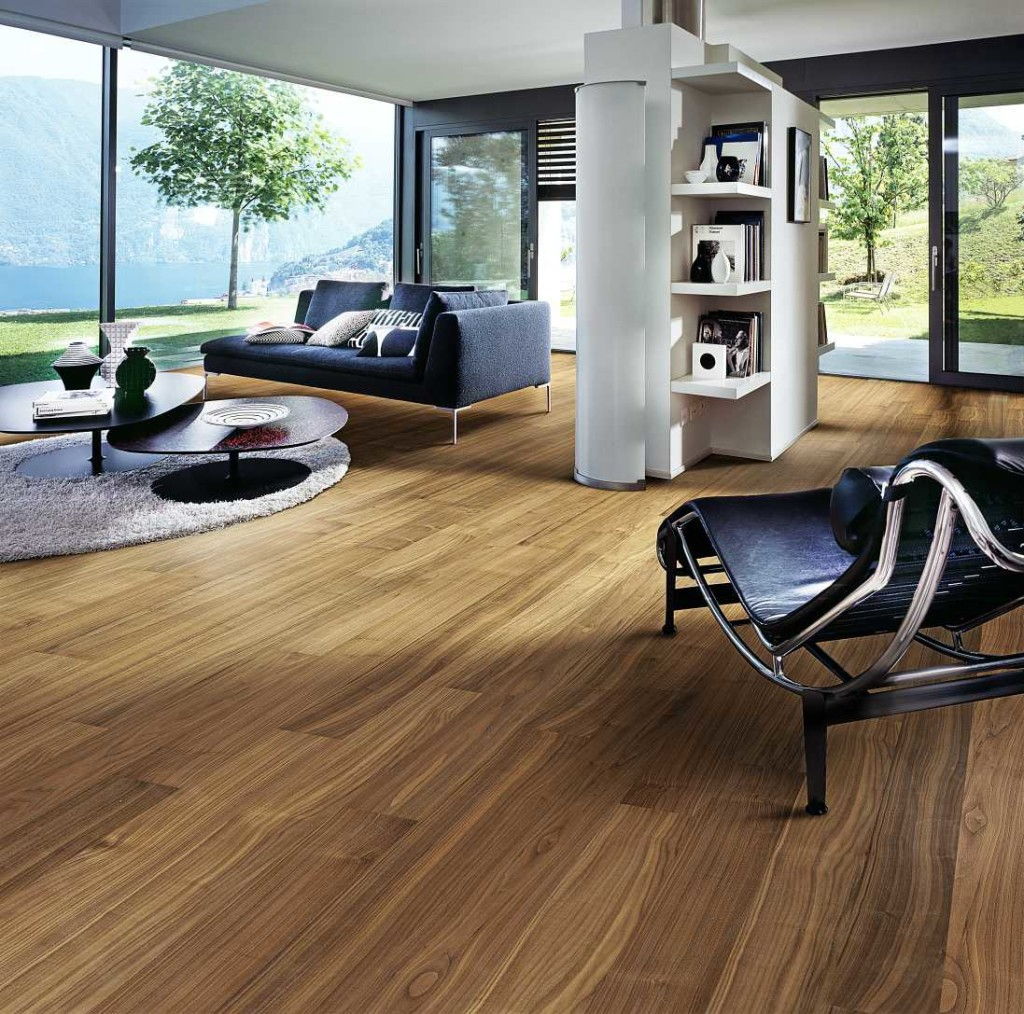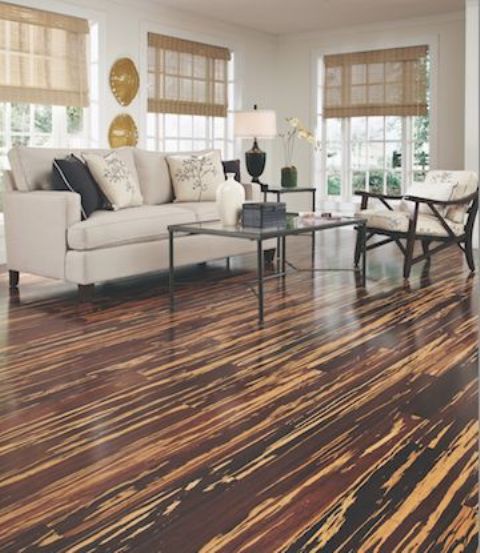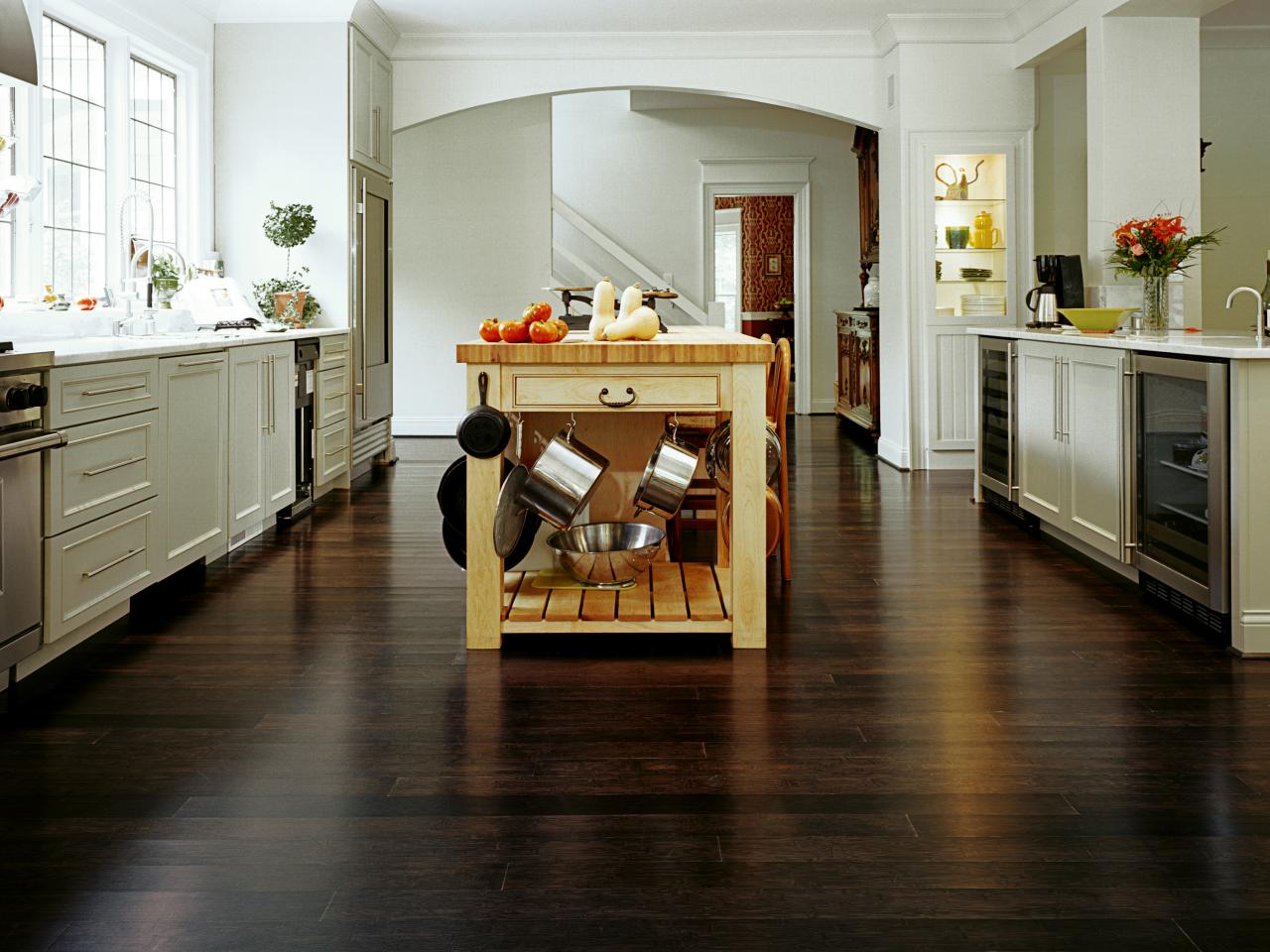Introduction to Bamboo Flooring Designs
Bamboo flooring has become a popular choice among homeowners and designers alike, thanks to its combination of durability, sustainability, and aesthetic appeal. Unlike traditional hardwood, bamboo is a renewable resource, making it an environmentally friendly option for those looking to reduce their carbon footprint. But bamboo flooring isn’t just about being green; it’s also incredibly versatile and can fit a wide range of interior styles, from contemporary to rustic.
- Versatility in Design: One of the main attractions of bamboo flooring is its versatility. Bamboo can be stained in a variety of colors, from light, natural hues to deep, rich tones. This means you can easily find a bamboo floor that complements your existing décor or serves as the foundation for a new design scheme.
- Durability and Strength: Bamboo is surprisingly strong and durable, often compared to hardwoods like oak and maple. The manufacturing process for bamboo flooring can enhance its strength, making it a great option for high-traffic areas in your home. Strand-woven bamboo, in particular, is known for its exceptional hardness and resistance to dents and scratches.
- Eco-Friendly Choice: For those concerned about environmental impact, bamboo is an excellent choice. Bamboo grows much faster than hardwood trees, with some species reaching maturity in just three to five years. This rapid growth cycle makes bamboo a highly renewable resource.
- Unique Aesthetic Appeal: Bamboo flooring offers a unique aesthetic that sets it apart from other types of flooring. Its distinctive grain patterns and smooth finish can add a touch of elegance and sophistication to any room. Additionally, the natural variations in color and texture make each bamboo floor unique.
- Cost-Effective Option: While bamboo flooring can sometimes be more expensive than other types of flooring, it is often more affordable than traditional hardwood. The cost can vary depending on the type and quality of bamboo, but in general, it offers a good balance of cost and quality.
- Comfort and Warmth: Bamboo flooring is not only beautiful and durable but also comfortable underfoot. It provides a natural warmth that can make your home feel cozy and inviting. Whether you’re walking barefoot or in slippers, bamboo flooring offers a pleasant and tactile experience.

Types of Bamboo Flooring
Bamboo flooring comes in several different types, each with its unique characteristics and benefits. Understanding the differences between these types can help you make an informed decision about which one is best for your home. Here are the main types of bamboo flooring you’ll encounter.
Horizontal Bamboo Flooring: Horizontal bamboo flooring is made by gluing strips of bamboo together horizontally. This type of flooring showcases the natural grain and knuckles of the bamboo, giving it a distinctive and organic look. It’s a great choice if you want to highlight the unique characteristics of bamboo.
Vertical Bamboo Flooring: In contrast to horizontal bamboo, vertical bamboo flooring is created by gluing the strips together vertically. This produces a more uniform and linear appearance, with fewer visible nodes and grains. Vertical bamboo flooring has a sleek, modern look that can work well in contemporary settings.
Strand-Woven Bamboo Flooring: Strand-woven bamboo is the most durable type of bamboo flooring. It is made by compressing bamboo fibers under high pressure, creating an extremely hard and dense material. Strand-woven bamboo is often twice as hard as traditional hardwoods, making it an excellent choice for high-traffic areas or homes with pets.
Engineered Bamboo Flooring: Engineered bamboo flooring consists of a top layer of bamboo veneer adhered to a plywood or fiberboard core. This type of flooring offers greater stability and resistance to changes in humidity and temperature, making it suitable for basements and other areas prone to moisture. Engineered bamboo can be installed over concrete subfloors and radiant heating systems.
Carbonized Bamboo Flooring: Carbonized bamboo flooring undergoes a process of heating, which darkens the bamboo and gives it a richer, amber color. While this process adds warmth and depth to the bamboo’s appearance, it also makes the flooring slightly softer than non-carbonized bamboo. It’s important to consider this trade-off when choosing carbonized bamboo.
Natural Bamboo Flooring: Natural bamboo flooring is the lightest in color, retaining the bamboo’s original hue. It is typically harder and more durable than carbonized bamboo since it has not undergone the heating process. Natural bamboo offers a clean and contemporary look, making it a versatile option for various interior styles.
Benefits of Bamboo Flooring
Bamboo flooring has gained a strong reputation for its numerous benefits, making it a favored choice for both residential and commercial spaces. From its environmental advantages to its aesthetic appeal, bamboo flooring offers several compelling reasons to consider it for your next flooring project.
Eco-Friendliness: One of the most significant benefits of bamboo flooring is its sustainability. Bamboo is a rapidly renewable resource, with some species capable of reaching maturity in just a few years. Unlike hardwood trees, which can take decades to mature, bamboo’s quick growth cycle makes it an environmentally friendly option.
Durability and Hardness: Bamboo flooring is incredibly durable and resistant to wear and tear. Strand-woven bamboo, in particular, is known for its exceptional hardness and strength, making it suitable for high-traffic areas. Its resilience to dents and scratches makes it a practical choice for homes with children and pets.
Aesthetic Appeal: Bamboo flooring offers a unique and attractive look that can enhance the beauty of any space. Its natural grain and smooth finish provide a sophisticated appearance, while its wide range of colors and finishes allows for versatility in design. Whether you prefer a contemporary, rustic, or traditional style, bamboo flooring can complement your aesthetic.
Easy Maintenance: Maintaining bamboo flooring is relatively simple. Regular sweeping or vacuuming, along with occasional mopping, is usually sufficient to keep the floor looking its best. Bamboo’s natural resistance to moisture and stains also makes it easier to care for compared to some other types of flooring.
Affordability: While bamboo flooring can vary in price, it is often more affordable than traditional hardwood. This makes it an attractive option for homeowners looking to achieve the look and feel of hardwood without the higher cost. Additionally, the longevity and durability of bamboo flooring can provide good value for money over time.
Health Benefits: Bamboo flooring is a great choice for those concerned about indoor air quality. It naturally resists dust and allergens, making it a hypoallergenic option. Furthermore, high-quality bamboo flooring often has low VOC (volatile organic compound) emissions, contributing to a healthier indoor environment.
Popular Bamboo Flooring Styles
Bamboo flooring is available in a variety of styles, each offering its unique look and feel. From traditional to contemporary, there’s a bamboo flooring style to suit every taste and interior design. Here are some of the most popular bamboo flooring styles you can consider for your home.
Natural Bamboo: Natural bamboo flooring retains the bamboo’s original light color, offering a clean and contemporary appearance. This style is perfect for modern homes and minimalist designs, providing a bright and airy feel. Natural bamboo also highlights the unique grain patterns and nodes of the bamboo, adding subtle character to your space.
Carbonized Bamboo: Carbonized bamboo undergoes a heating process that darkens the bamboo, giving it a rich, amber hue. This style adds warmth and depth to your floors, making it an excellent choice for traditional or rustic interiors. The darker tones of carbonized bamboo can also help create a cozy and inviting atmosphere.
Strand-Woven Bamboo: Strand-woven bamboo is created by compressing bamboo fibers under high pressure, resulting in a highly durable and dense material. This style is available in a range of colors and finishes, from natural to dark stains. Strand-woven bamboo is ideal for high-traffic areas and offers a sophisticated, contemporary look.
Distressed Bamboo: Distressed bamboo flooring features a weathered and aged appearance, achieved through various finishing techniques. This style is perfect for adding a rustic or vintage charm to your home. Distressed bamboo can create a warm and inviting atmosphere, making it a popular choice for cozy, country-style interiors.
Hand-Scraped Bamboo: Hand-scraped bamboo flooring has a textured, handcrafted look that adds character and uniqueness to your floors. The subtle grooves and imperfections give the flooring a more natural and rustic feel. This style works well in both traditional and eclectic interiors, providing a sense of craftsmanship and authenticity.
Engineered Bamboo: Engineered bamboo flooring consists of a bamboo veneer on top of a plywood or fiberboard core. This style offers greater stability and resistance to changes in humidity and temperature. Engineered bamboo is available in various finishes and can be installed over different types of subfloors, making it a versatile and practical option.
Installation Tips for Bamboo Flooring
Installing bamboo flooring can be a rewarding DIY project or a job for professional installers. Either way, knowing the right steps and tips can ensure a successful and long-lasting installation. Here’s a guide to help you install your bamboo flooring like a pro.
Acclimate the Bamboo: Before installation, it’s crucial to acclimate the bamboo flooring to the room where it will be installed. Leave the bamboo planks in the room for at least 48-72 hours to allow them to adjust to the temperature and humidity. This helps prevent issues like warping or gaps after installation.
Prepare the Subfloor: A clean, dry, and level subfloor is essential for a successful bamboo flooring installation. Ensure the subfloor is free of debris, dirt, and any old adhesive. If necessary, use a leveling compound to smooth out any uneven areas. Proper subfloor preparation will help the bamboo flooring adhere correctly and prevent future problems.
Choose the Right Installation Method: Bamboo flooring can be installed using various methods, including nail-down, glue-down, and floating. The best method depends on the type of bamboo flooring and the condition of the subfloor. For example, engineered bamboo flooring is often installed using the floating method, while solid bamboo may be nailed or glued down.
Use the Right Tools and Materials: Having the right tools and materials on hand is essential for a smooth installation. This includes a tape measure, saw, adhesive (if gluing down), nails (if nailing down), spacers, a tapping block, and a pull bar. Using high-quality materials and tools will help ensure a professional finish.
Maintain Expansion Gaps: Bamboo flooring, like all wood products, expands and contracts with changes in temperature and humidity. To accommodate this natural movement, leave expansion gaps around the perimeter of the room and any fixed objects. These gaps are usually covered by baseboards or trim, ensuring a neat appearance while allowing for necessary movement.
Install the Flooring: Begin installation along the longest wall, working your way across the room. Use spacers to maintain expansion gaps and ensure the planks are tightly joined. Stagger the end joints of the planks in each row to create a more natural and stable pattern. Follow the manufacturer’s instructions for your specific type of bamboo flooring to ensure a successful installation.
Maintaining and Caring for Bamboo Floors
Proper maintenance and care are key to keeping your bamboo floors looking beautiful and lasting for years. Bamboo flooring is relatively low-maintenance, but following some simple guidelines can help preserve its appearance and durability. Here’s how to care for your bamboo floors effectively.
Regular Cleaning: Regular cleaning is essential to prevent dirt and debris from scratching the surface of your bamboo floors. Sweep or vacuum the floors regularly to remove dust and dirt. Use a soft-bristle broom or a vacuum cleaner with a hardwood floor attachment to avoid damaging the bamboo.
Mopping: When mopping bamboo floors, use a damp (not wet) mop and a pH-neutral hardwood floor cleaner. Avoid using excessive water, as bamboo is sensitive to moisture. Wipe up any spills immediately to prevent water damage and staining.
Protecting the Floor: To protect your bamboo floors from scratches and dents, use felt pads or furniture coasters under the legs of furniture. Avoid dragging heavy objects across the floor. Place doormats at entryways to reduce the amount of dirt and moisture tracked onto the floors.
Avoid Harsh Chemicals: Harsh chemicals and abrasive cleaners can damage bamboo flooring. Stick to pH-neutral hardwood floor cleaners and avoid using ammonia, vinegar, or steam mops. These can strip the finish and cause the bamboo to swell or discolor.
Managing Humidity: Bamboo flooring can be sensitive to changes in humidity. Use a humidifier or dehumidifier to maintain a consistent indoor humidity level, ideally between 40-60%. This helps prevent the bamboo from expanding or contracting excessively.
Refinishing: Over time, bamboo floors may show signs of wear and tear. Refinishing can restore their original beauty. Light sanding and the application of a new finish can rejuvenate the surface. Always follow the manufacturer’s recommendations for refinishing to ensure the best results.
Eco-Friendly and Sustainable Aspects of Bamboo Flooring
Bamboo flooring is not only a stylish and durable choice but also an environmentally responsible one. Its sustainability and eco-friendly qualities make it an attractive option for those looking to reduce their environmental impact. Here’s why bamboo flooring stands out as a green choice.
Rapid Renewability: Bamboo is a highly renewable resource, with some species capable of reaching maturity in just three to five years. This rapid growth rate contrasts sharply with traditional hardwood trees, which can take decades to mature. Harvesting bamboo does not require replanting, as the plant regenerates from its root system.
Low Environmental Impact: The cultivation of bamboo has a relatively low environmental impact. Bamboo can be grown on marginal land that is unsuitable for other crops, and it requires minimal pesticides and fertilizers. Additionally, bamboo forests have a positive effect on soil health and erosion control.
Carbon Sequestration: Bamboo plants are effective at sequestering carbon dioxide, a major greenhouse gas. During its growth, bamboo absorbs more CO2 and releases more oxygen compared to an equivalent stand of trees. This makes bamboo an important player in combating climate change.
Sustainable Production Practices: Many manufacturers of bamboo flooring adhere to sustainable production practices. This includes using formaldehyde-free adhesives and finishes that meet low VOC (volatile organic compound) standards, which contribute to better indoor air quality. Look for certifications like FSC (Forest Stewardship Council) or GREENGUARD to ensure the product meets high environmental standards.
Longevity and Durability: Bamboo flooring is known for its durability and longevity, reducing the need for frequent replacements. This long lifespan contributes to its sustainability, as it minimizes resource consumption and waste over time. Strand-woven bamboo, in particular, is exceptionally hard and resistant to wear.
Recyclability and Biodegradability: At the end of its life cycle, bamboo flooring can be recycled or allowed to biodegrade naturally. Unlike synthetic flooring materials, which can persist in landfills for centuries, bamboo decomposes relatively quickly, returning to the earth without leaving harmful residues.
A Closer Look at Bamboo Flooring
Bamboo Flooring Ideas With Pros And Cons
Bamboo Flooring for the Kitchen
Related Posts:
